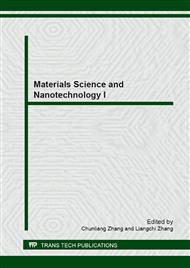p.605
p.609
p.614
p.618
p.623
p.627
p.632
p.636
p.640
Effect of Accumulative Roll Bonding Process with Inter-Cycle Heat Treatment on Microstructure and Microhardness of AA1050 Alloy
Abstract:
Processes with severe plastic deformation (SPD) may be defined as metal forming processes in which ultra-large plastic strain is introduced into a bulk metal in order to create ultra-fine grained (UFG) metals. Accumulative roll bonding (ARB) is a SPD process that may be defined as multisteps rolling process in order to create high strength metals with UFG structure. In this study, ARB process with inter-cycle annealing is carried out on the commercial purity aluminium (AA1050) sheet up to 13 cycles. The purpose of the present study is investigation of microhardness behavior and microstructural evolution in the ARB processed AA1050 sheet. Micro-Vickers hardness measurement is carried out throughout thickness of the ARB processed sheets. In addition, with increasing ARB cycles the grains size is reduced in nanometer level.
Info:
Periodical:
Pages:
623-626
Citation:
Online since:
December 2012
Authors:
Price:
Сopyright:
© 2013 Trans Tech Publications Ltd. All Rights Reserved
Share:
Citation:


